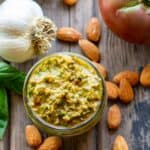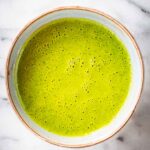Red Wine Bordelaise
This easy recipe for Bordelaise sauce is a simple way to take your steak to the next level. Made with red wine, shallots, and beef stock, this classic French sauce delivers deep, umami flavor with a smooth, velvety texture. It’s easier than you think, and the results are well worth it!
This post may contain affiliate links.
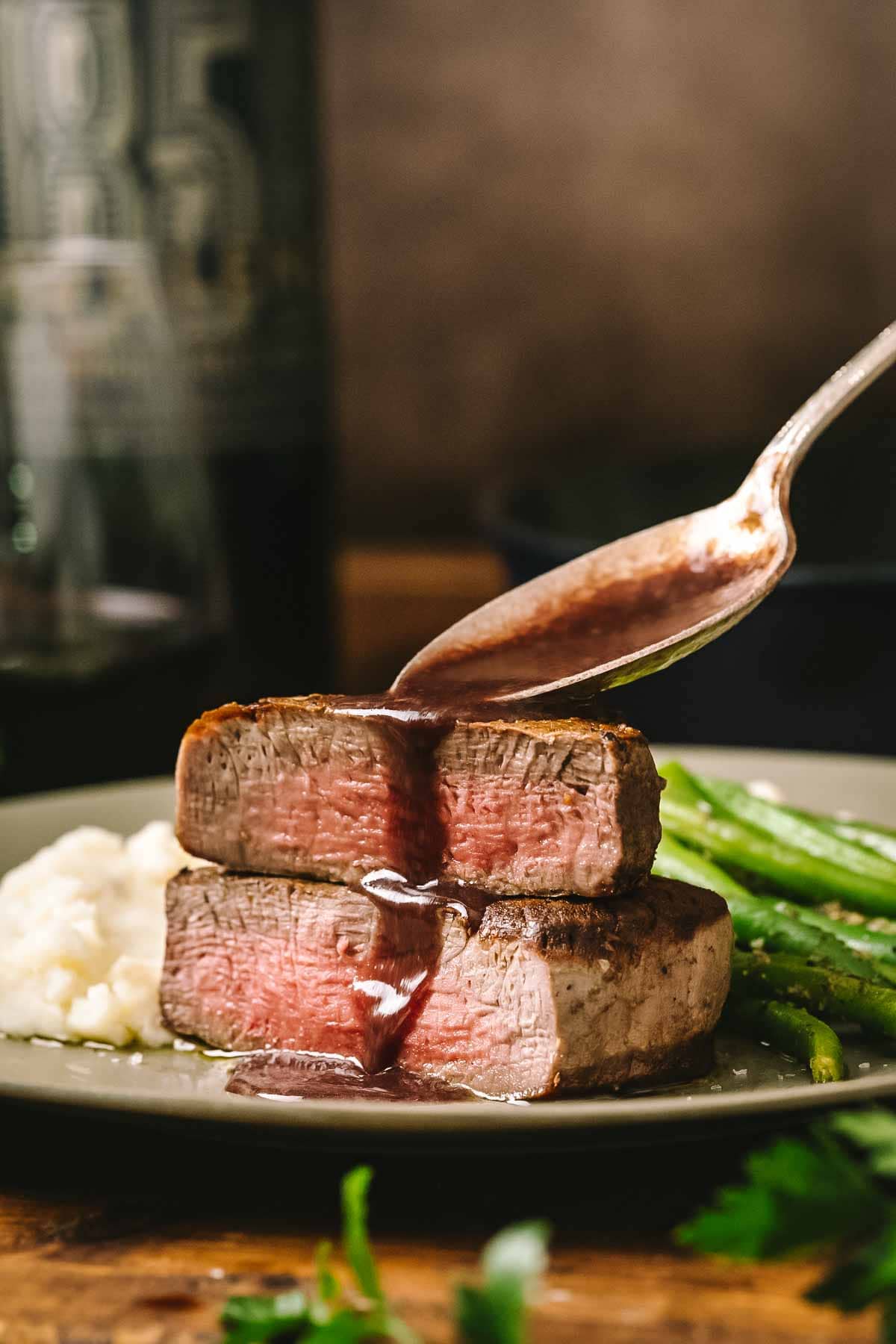
You'll Love this Bordelaise Sauce Recipe
This bordelaise sauce recipe is remarkably straightforward, yet incredibly impressive. It's perfect for elevating special occasion meals like my pan seared filet mignon for two or this easy roasted whole beef tenderloin in the oven.
Sauces are a chefs' secret weapon, and this classic recipe is one of my all time favorites. A little bit of bordelaise will make your steaks and roasts taste like they came from an expensive steakhouse rather than your home kitchen.
The secret? It's actually a lot easier than you think! While it takes some time to reduce and develop those complex flavors, the technique is surprisingly simple and the results are absolutely worth it.

What is Bordelaise Sauce?
Bordelaise is a classic French sauce originating from the Bordeaux region of Southwest France. Traditionally, this rich brown sauce combines dry red wine (typically Bordeaux wine or Cabernet Sauvignon), bone marrow, shallots, and veal stock or demi-glace reduced into a deeply flavorful accompaniment for beef dishes.
My version simplifies the classic bordelaise sauce while maintaining its luxe flavor. By deglazing the pan and using high quality beef stock, you can achieve a similar depth of flavor without spending days making demi-glace.
A knob of butter is whisked in right before serving to give it that signature velvety texture and glossy finish. One taste and it's bound to become your favorite steak sauce!
Looking for more classic sauce recipes? Try my zesty Italian salsa verde, this silky beurre blanc sauce made with white wine, or this easy authentic marinara sauce.
Why This Recipe Works
- Restaurant-quality results with simple, accessible ingredients and clear technique.
- Make-ahead friendly - prepare in advance for stress-free entertaining.
- Versatile flavor booster that transforms ordinary red meat into extraordinary meals.
- No fancy equipment needed - just a small saucepan and basic kitchen tools.

Red Wine Sauce Recipe Ingredients
Shallots - Their delicate, aromatic quality provides the perfect flavor foundation. Unlike onions or garlic cloves, shallots mellow beautifully when cooked over medium heat and won't overpower the sauce.
Dry Red Wine - Use a wine you'd enjoy drinking, ideally from the Bordeaux region like Cabernet Sauvignon. The wine's flavor becomes concentrated, so quality matters for this particular recipe.
Beef Stock - Homemade beef stock delivers the richest results, but good-quality store-bought works well too. Look for stock or bone broth rather than beef broth, and if you can find it, store-bought demi-glace works beautifully. Using pan drippings from cooking a steak or slow-roasted beef to add even more depth.
*Find the full ingredient list in the recipe card below!
Helpful Equipment
- Small saucepan
- Whisk
- Fine mesh strainer
- Second saucepan for strained sauce
How to Make Red Wine Bordelaise

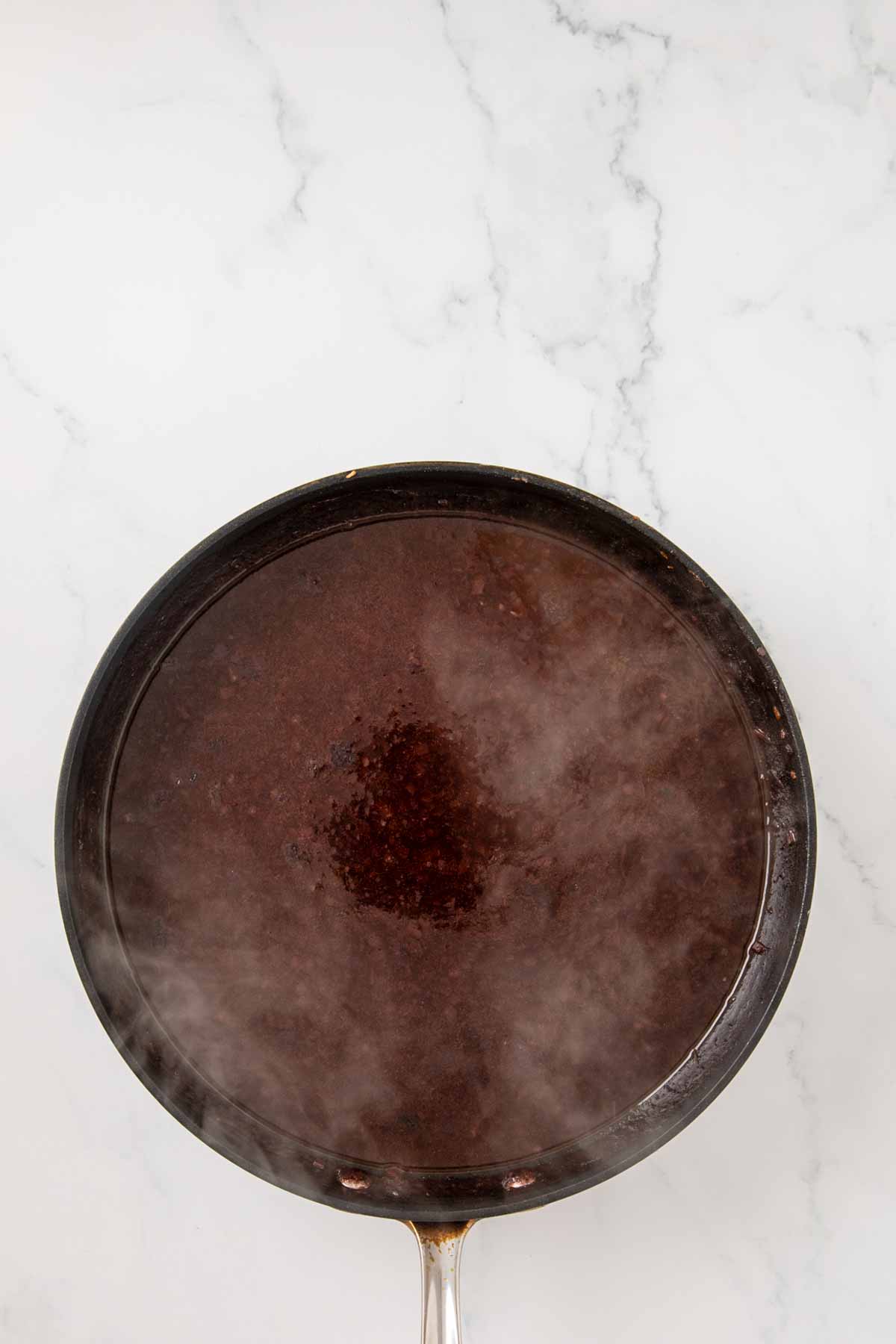
- Heat olive oil in a saucepan over medium heat.
- Add shallots with a pinch of salt, then cook until softened and just starting to turn golden, about 8 minutes.
- Stir in all-purpose flour, then slowly whisk in dry red wine and beef stock. Bring up to a simmer and cook until reduced by half and thickened, about 15-20 minutes.
Pro Tip: Traditional recipes often include thyme sprigs or a bay leaf during simmering for additional flavor. Add them in for more complexity!


- Set a fine mesh strainer over another saucepan, then strain sauce, being sure to press down to extract every last bit of liquid. The strained sauce will have a more refined texture. Taste for seasoning and add more salt and black pepper as needed.
- With the pan over low heat, whisk in cold butter until the sauce looks glossy and emulsified. Remove from the heat, then serve immediately.
Pro Tip: When incorporating the butter, make sure your pan is over low heat and whisk constantly. If the butter melts too quickly or the sauce gets too hot, it may break and separate.


Tips for Success
- Keep the sauce at a gentle simmer at medium-high heat during reduction.
- For maximum flavor, make the sauce in the same pan used to cook your steaks, incorporating all of those flavorful browned bits.
- The sauce should coat the back of a spoon when finished - if it's too thin, continue reducing; if too thick, add a splash of stock.
How to Use this Bordelaise Recipe
Serve this rich bordelaise sauce alongside your favorite beef dish with steakhouse inspired sides like this silky parsnip celery root puree, a classic Dauphinoise potato gratin, or some crispy smashed potatoes.
Don't forget a green vegetable like this simple parmesan spinach or this creamy kale gratin for a complete dinner!
Finish with a classic French dessert like my flourless chocolate souffle cakes or this light and easy maple berry clafoutis.
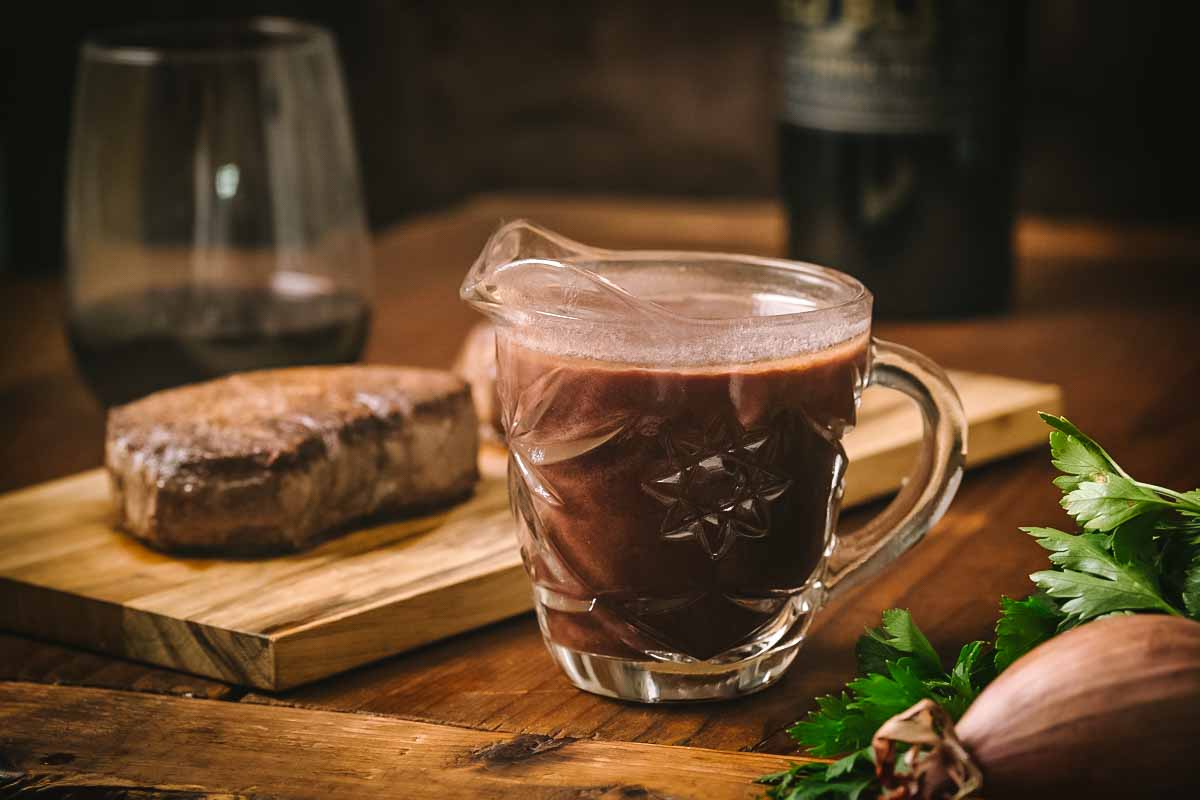
How to Store Red Wine Bordelaise
Store leftover sauce in an airtight container in the refrigerator for up to 3 days. The sauce may develop a thin layer of solidified fat on top when chilled – this is normal and actually helps preserve it.
To reheat, warm the sauce gently in a small saucepan over medium-low heat, whisking constantly. If the sauce appears to separate during reheating, whisk in a whisk in some ice water, one teaspoon at a time, to help re-emulsify it.
For larger batches, you can carefully use an immersion blender to re-emulsify a broken sauce, but be cautious not to incorporate air bubbles.
I don't recommend freezing this classical sauce as the emulsion can break when thawed, affecting both texture and appearance.

Recipe FAQs
Bordelaise sauce has a rich, deep flavor profile with prominent red wine notes balanced by savory beef stock. It's silky and slightly tangy from the wine reduction, with subtle sweetness from the shallots and a velvety texture from the butter emulsion. The overall effect is luxurious and intensely savory without being heavy.
Bordelaise is pronounced "bor-duh-LAYZ" with emphasis on the last syllable. The final 'e' is silent, and the 's' has a 'z' sound. It's named after the Bordeaux region in France, where the wine traditionally used in this sauce originates.
The primary thickening method for bordelaise is reduction – simmering until excess liquid evaporates, concentrating flavors and naturally thickening to your desired consistency. If your sauce still needs thickening after proper reduction, you can make a beurre manié by mashing together equal parts soft butter and all-purpose flour, then whisking small amounts into the simmering sauce.
While both sauces feature red wine, they serve different purposes. Bordelaise is a refined sauce made with dry red wine, beef stock, and shallots, typically served alongside meat. Bourguignon refers to a cooking method where meat (traditionally beef) is slowly braised in red wine with vegetables and herbs until tender. Bourguignon is a complete dish, while bordelaise is a sauce for finishing other dishes.
Did you LOVE this recipe? Please leave a star ⭐️ rating and comment and tag your creations @ColeyCooks on Instagram!
Want to Save This Recipe?
Enter your email & I'll send it to your inbox.
By submitting this form, you consent to receive emails from Coley Cooks.
Red Wine Sauce (Bordelaise)
Ingredients
- 2 teaspoons olive oil
- 4 shallots finely chopped
- Kosher salt and freshly cracked black pepper to taste
- 1 tablespoon flour
- 2 cups dry red wine
- 3 cups beef stock or pan juices*
- 2 tablespoons unsalted butter cold
Instructions
- Heat olive oil in a large saucepan over medium heat.
- Add shallots with a pinch of salt, then cook until softened and just starting to turn golden, about 8 minutes.
- Stir in flour, then slowly whisk in red wine and beef stock. Bring up to a simmer and cook until reduced by half and thickened.
- Set a fine mesh strainer over another saucepan, then strain the mixture, being sure to press down to extract every last bit of liquid. Taste for seasoning and add more salt and pepper as needed.
- With the pan over low heat whisk in the butter until the sauce looks glossy and emulsified. Remove from the heat, then serve immediately.
Notes
- For best results, use good quality, homemade beef stock and/or the drippings and pan juices from roasting a piece of beef or cooking a steak.
- To use pan juices, after cooking a steak or roast, remove excess fat from the pan, then deglaze with 1 cup of water to loosen up the browned bits on the bottom. Pour into a liquid measuring up and add additional beef stock as needed to achieve 3 cups total for the bordelaise.
- When whisking in the butter, it’s important that the heat not be too high and that the butter be cold so that the sauce emulsifies properly. If the sauce gets too hot at this point or it sits in the pan too long, it could break.
- The sauce should coat the back of a spoon when finished - if it's too thin, continue reducing; if too thick, add a splash of stock.
- Keep the sauce at a gentle simmer at medium-high heat during reduction.
- For maximum flavor, make the sauce in the same pan used to cook your steaks, incorporating all those flavorful browned bits.


